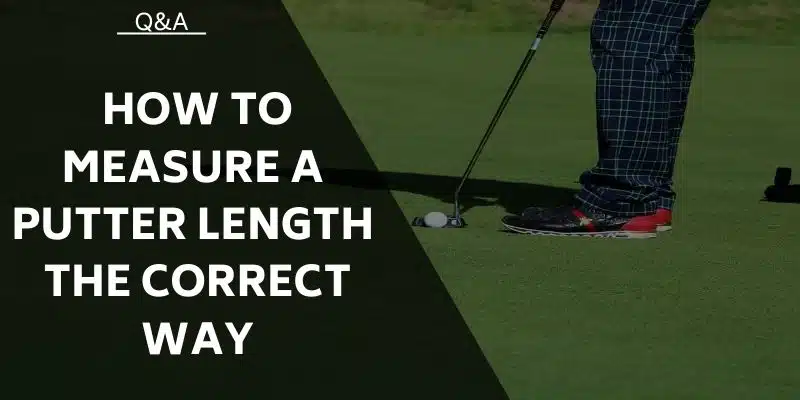Golfers are sticklers for rules and Rule No. 13 of the United States Golf Association’s “Rules of Golf,” is referred to as “Ball played as it lies.” This rule prohibits improving the lie, the area intended for making a swing, the line of play, or the area in which the ball is to be dropped or placed.
This means that you should play your shot from where the golf ball lands without any improvement to the situation. Being so intricate, the rules do have some exceptions and allow officials to decide on a case-by-case basis to implement these exceptions.
A mulligan can be agreed to between golfing partners to provide the golfer an opportunity to replay a shot that went awry through bad luck or a blunder. There is no provision made in the rules of golf for a mulligan.
Mulligan – The Origins
The origins of the term mulligan are unclear but there are a few theories. According to the United States Golf Association (USGA), it is named after a Canadian golfer who played out of the Country Club of Montreal during the 1920s, David B. Mulligan (1869-1954). The exact circumstances are unknown but the 3 possibilities that may have led to the origin of the term are
- After hitting a poor tee shot, Mulligan teed and replayed his shot which he referred to as a “correction shot”. His playing partners decided that it would be more fitting to name the practice after him. When moving from Canada to the U.S. David Mulligan introduced the concept at Winged Foot.
- A second version has the extra shot given to Mulligan due to his being jumpy and shaky after a difficult drive over the Victoria Bridge to the course.
- A third version is that he was given an extra shot after he overslept and then rushed to get ready to make the tee time
An alternative version relates to another golfer named John A. “Buddy” Mulligan, a locker room attendant at Essex Fells Country Club in New Jersey in the 1930s. During his tenure at the Essex Fells, he frequently played 18 holes with the assistant pro Dave O’Connell and reporter Des Sullivan. This generally happened after he finished cleaning the locker room and there were no other members in the locker room.
One day after hitting a terrible first shot, he begged O’Connell and Sullivan to allow him to replay the shot since they “had been practicing all morning” while he was working. After hearing of this, members soon began giving themselves “Mulligans” in his honor.
In another interesting theory indicates that the term could relate to an ethnic slur during a period when Irish-Americans joined country clubs and were ridiculed as hopeless golfers.
The Dictionary of Word and Phrase Origins offers another explanation that freebies were offered by bars and taverns offering a bottle of booze or a mixture of spices kept for customers to get some extra kick from their beers.
What Exactly Is A Mulligan?
A mulligan enables you to replay a shot from the spot of the previous stroke without penalty. This can be allowed in friendly games due to a poor stroke on the previous stroke. This practice in casual play can speed up play and reduce the time used for searching for a lost ball.
All members of the group must unanimously agree to the use of mulligans before you can call for a mulligan.
If you attempt it or agree to let it happen in sanctioned competitions, it will certainly lead to disqualification.
Purpose of a Mulligan
A mulligan in golf is a special occurrence offering you a second chance to clear your psyche, alleviate stress, save your sanity, and bolster self-esteem.
The reverse of a mulligan is a “gilligan” whereby your opponent can request you to replay a successful stroke.
Number of Mulligans
Mulligans can only be played on tee shots and sometimes the members of a group can agree to limit it to the first tee shot of the round.
If agreed to by all members of the group, multiple mulligans may be allowed on the first tee under a variety of names (Finnegan, Branagan, Flanagan, or Craig) until the player has hit a playable tee shot.
During charity events, the organizers may sell mulligans to collect more money for the charity. The number of mulligans allowed is then limited to the number of tickets purchased at the start of the event.
The Stigma Attached to Mulligans
The mulligan is not a practice that is too widely accepted, and some gofers are highly offended if you even dare to mention the word in general conversation.
Jon Tattersall, the Atlanta-based GOLF Top 100 instructor, said “a roving mulligan is just ‘taking the piss,’ as we say in England. At that point, you are not playing, you’re practicing.” He added “It can be helpful to get into the habit of hitting one shot only off the 1st tee, as it gets your adrenaline going and gives you a good idea of how your technique is doing. Stress is the only real gauge. Anyone can hit a good shot with nothing on the line.”
Veteran Tour professional Brian Henninger added “Mulligans, breakfast balls — I just don’t approve of them, test yourself by adding up every stroke. There are exceptions if you’re playing some alternative formats agreed upon before you play but there’s nothing worse than playing with ignorant players who don’t abide by, understand or fudge the basic integrity of score.”
Another interesting tale is of an American golfer scuffing his opening tee shot during a round in Scotland after which he turned to his caddie and asked “What do you call a mulligan over here?”, to which the caddie responded “We call it ‘3.’”
The Right And Wrong Time to Ask For a Mulligan
A good guide for allowing a mulligan is when a golfer drives his tee shot off the first tee out of bounds. Mulligans can make things more enjoyable for some but allowing too many mulligans can strip the stakes and enjoyment of the game for competitive-minded players.
Do not make use of a mulligan when it affects your pace negatively, or the group behind you are playing faster than you,
Furthermore, you should never call for a mulligan if you are outperforming the other players in your group, hitting fairways regularly and reach the greens in regulation,
Never ask for a mulligan when you are laying on the green.
If the group unanimously agrees to allow mulligans during the round you have to clarify which of the mulligan alternatives will be applied.
The alternatives are:
- The must mulligan – Irrespective of the outcome of your mulligan you MUST play the ball from where it ends up. If the ball is in a worse position, you still have to play the second shot
- The provisional mulligan – This will offer you a choice of whether you want to play the original shot or the mulligan. This is similar to playing a provisional shot but without the associated penalty if you decide to play the mulligan.
To add some fun to the use of the mulligan in a round of golf, place your Golf Mulligan Excuse Card in your back pocket. When selecting to employ the mulligan, rip the card out of your pocket and wave it in the air to the amusement of your playing partners.
In Conclusion
The use of mulligans is strictly prohibited by the rules of golf and can lead to disqualification when used in a sanctioned event.
However, in social rounds and charity events, it is sometimes used to make the round more fun for struggling golfers, nervous golfers, or someone that have hit a shot that is out of character. It could save the sanity of many golfers and lead to a most enjoyable round.
Define the rules for mulligans between the group, use them to make your round enjoyable and fun. Alternatively, practice harder and get into a position where you do not need a mulligan.
Related Articles
- Golf Terms Explained: A Complete A to Z of Common Golfing Terms and Sayings
- Scratch Golfer Explained
- The Birdie In Golf Explained
- What is a Forecaddie?
Nick is the founder of GolfSpan and an avid golfer. He's not quite a pro but has over 15 years of experience playing and coaching golfers worldwide. His mission is to bring the golfing community a better experience when it comes to choosing the right golf gear and finding the right setup for your game.






